Pakistan, one of the most populated countries in the world, is an unfamiliar goal for most food friends. Although on the surface there are beautiful landscapes under review, rich cultural heritage, and more than 70 languages (through Translators Without Borders), which provide information to the country’s vast food culture. According to state newsnatore, always for the good of the world-renowned dishes bags of the famous neighboring India, Pakistani cuisine has many similarities — captivating, sharp, fragrant — Because before the partition of India in 1947, the British Raj ruled the two countries under one name. Pakistani food is also influenced by the centuries-long resurrection of the Mughal umpire who brought food from distant Ottoman, Uzbekistan, and Iran. In modern times, the remains of history are preserved in many receipts, while some new ones are also arranged.
Perhaps more than every and one factor, food here has the effect of religion in the tradition. According to each culture, about 95% of the population follows Islam, which means that you will not find pork (or its derivatives) or alcohol throughout the country. But, with the equality of the Islamic Indian people, the Pakistani people use a lot of meat; most dishes are made from lamb, goat, beef, or chicken, although pulses are also used manageably. Food is also festive; as in Ramadan celebrations, live Saim fasts and feasts at night.
Sindhi biryani

All other rice is weakened in comparison with biryani. Open basmati rice is important, placed between yogurt marinated meat, sharp tomato gravy, saffron milk, fresh mint, green peppers, and dried potatoes Bashi and dates. Biryani appears to have become disturbed in South Asia in many cases, with the name being explained by Persian: Brange Brian, who would do a rice fly.
A lavish dish now associated with the country’s southeastern Sindh province, the Sindhi biryani was previously reserved for Sultans, now spiced up in weddings and pleasures such as Eid al-Fitr. It is of the cooked variety-meaning that the English characters are already cooked, then they are taken in the pot, closed and dehydrated, and breathed over the fire. This and makes the socks more balanced because of the process of manufacturing the presented items that take place on the tail. It has a delicious flavor to it, which is flattered and tart flavored by yogurt and dried potato Bashi, which offers notes of delicious flattering bitterness.
Fruit chaat
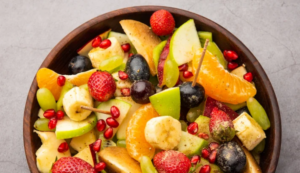
You may be familiar with fruit salads, but have you heard of fruit licking? It uses local fruits in Pakistani specialties such as mango, pomegranate, Malta, grapes, apples, bananas, and pickled fruits, and many more. The fruits are cut into small pieces and soaked in orange juice so that they are especially sweet and juicy. Of course, what makes fruit licks different from ordinary fruit salads is licking spices and a touch of sugar. Licking spices are spicy blend tangy, bitter, and bullish, so the fruits acquire a deeper taste.
Due to its freshness, you will find fruit licks every breakfast (evening meal time after fasting). In the Heat, small plates of fruit lick are given on fresh fruit scales in street food baskets.
Haleem

Halim may be one of the main foods linked between Muslims in Pakistan, India, and Bangladesh. It is a specific food in which wheat (or barley), meat (beef, goat or goat), and legumes are gradually cooked over the heat with the best materials, including a large amount of ghee, spices, rose leaves, and mow to make it richly fragrant and thick. Once garnished with juliand ginger, crispy caramelized onions, and poisonous coriander, it is unacceptable for those who know it.
It has a long history of innocent and potent diets. It originated in Iran, but Halim — as we recognize it — emerged in Hyderabad, India, during the reign of shashwa Nizam Mehboob Ali Khan. Later, Muslims fleeing India for Pakistan during the Partition brought the food to Karachi, where it is still very much loved today.
Chapli kebab
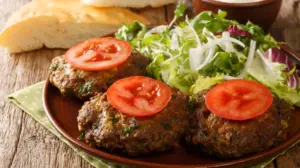
There is also no kebab shop in the U.S. that can compare peshawary street vendors ‘ skimpy, tasty, and crispy Chapel kebabs. Imitate tender meat buffalo quilted in a mix of tomatoes, onions, bulky pomegranate grains, green peppers, fresh lemon juice, fresh herbs, eggs, and many fresh spices: these are the flapy kebabs. They are served with the best naan for the opportunity to drink the juice and zest beautifully, as well as a chicken fresh salad.
In the local dialect Pashto, the name of the Chapali kebab is chaparykh, which means” thin “or” smooth ” — which mimics the Mickle, round shape of the kebabs. We suggest you go to Peshawar, the capital of Khyber Pakhtunkhwa province for the best Chapali kebab. Many shops launched in 1950 still see a large number of what to do today, especially in the historic “storytelling Bazaar,” where locals have the traditional opportunity to tell stories while eating kebabs.
Peshwari naan

Black Farhadi single from Nan’s Fame which is one of the best variants in South East Asia. The origin of Nan is difficult to attach to any one location-according to tower tandoori, various languages such as Turkish, pirate, and Uzbek call “Nan” smooth breads “NAN” on a small scale, revealing that no one country can make a full claim. However, it is certain that one of the best and most delicious varieties, Peshawari Nan, originated in Peshawar, a city located in the northwest of Pakistan. Today it has gained fame all over the world and has taken a special place in Western countries such as England.
Peshawari Nan is loved by its soft and aromatic do-in-Stuffed Sweet wholemeal, including raw beans, sunny vegetables, dried fruits, honey brown sugar, Malay butter, and hot spices at the bottom. Peshawari Nan is made delicious daily at breakfast.
Nihari
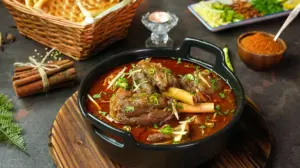
Nahari, which shows the love-filled flesh of the Islamic Republic of Pakistan in a more perfect way. It has a fragrant aroma of freshly expanded and ground vegetables, a few tablespoons of ghee, and a more fringe of Khandan, the nahari is made on rainy nights. Although mutton and meat Reds are considered crispy, they become soft and juicy chickpeas when cooked overnight. The dough helps to make the curry thicker, which matches with the naan and can be eaten better.
The name nahari is from the Arabic language “Nahr” which means “dawn” (by Wai Lahore frying pan). Stories tell that the Nawab of Old Delhi used to make Nahari delicious in the morning, after dawn (sunrise prayer). There are some things that used to be clever after that! After Pakistan’s independence in 1947, refugees from Delhi brought Nahari to Karachi, where it gained significant fame, and is now widely believed to be Pakistan’s national food.
Sheer khurma
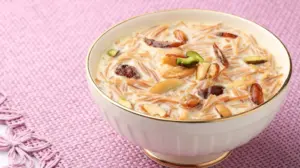
We believe that most people will know Pakistan for its curries and kebabs – but have you tasted sweet sweet sweet foods? While you’ll see English biscuits sneak peeks with tea, there are plenty of Indigenous desserts out there that are super tasty and ready to explore.
The most well-known dessert in the country is Lion Khorma, a soft and delicious pudding that is slowly cooked with milk, pink water so that it becomes thick and delicious. Pistachios, almonds, sweet dates, raisins, pink cumin, Elachi, and grilled semiya (fine vermicelli) turn lion Khorma into the new more delicious, making it famous. Add sugar (or molasses) to make the pudding sweet to the lion Khorma, but the big mistake is to add more sugar to the lion Khorma. The lion born in dates and raisins adds physical sweetness to the Khorma, so it hides excess sugar to be delicious.
Chana chaat
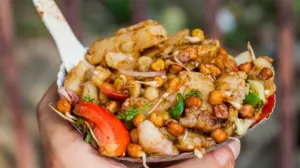
The Mughal Empire Indian is responsible for all kinds of things, such as Taj Mahal, household suits, and food. But did you know that the same man, the king of the world, is the inventor of the Taj Mahal and licking? During the 16th century (when Pakistan was not liberated), the spread of a cholera suggested to physicians that the disease be eliminated by mixing water with tamarind, cayenne pepper, and fresh herbs; it was the beginning of licking as we know it today.
Over time, licking has become an important part of Pakistani food and culture. Picking lick in particular, which holds the title of the popular option served at vendors, lick shops, and restaurants displayed on the streets across the country. This dish usually includes boiled chickpeas, diced onions, tomatoes, and spices, topped with sharp sauces, yogurt, and licked spices.
Halwa puri

In the morning if there is a sweet breakfast waiting to be eaten, can anyone get any better? Americans have a modest choice of pancakes or waffles with Shira, but people in Pakistan want halva Puri.
The Arabic word meaning sweet gives information about sweets, but this name is different the creamy, sour fist, tahini halo that you find on the streets of Israel. Pakistani semolina halwa is a soft, porridge-filled pudding made from grated semolina, sugar, and aromatic reconciliation in food. You will get it with peeled nuts, ready to eat with crispy and puffy puree. In winter, the Cook has seasonally prepared semolina with milk roasted carrot halva, which is much sweeter. The sweetness of both elections is well combined with turmeric, spicy pickled spices, so you can combine them together See you in addition to food.
Falooda
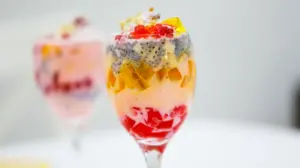
Faluda is the middle between a favorite drink and a dessert in Pakistan. Its history probably goes back as far as the Mughal Empire, as there is also a very similar sweetener faludeh in Moderne Iran (according to NPR).
When the winter comes on, everyone has the same thing in mind.: Faluda. Found in specialist shops across Pakistan, including vermicelli noodles, milk, sparse bitterness, and fragrant pink syrup (which gives faluda its famous pink color). The usual dessert is served in a long glass and garnished with chopped fruits (such as pistachios or almonds) and a scoop of delicious vanilla ice cream. While pink syrup fowl is the most traditional and more preferred choice, Moderne varieties also have mangos (which include glassy cherries) and strawberries (which include filet jelly). Which one would you like?

